How Beth Kosterboer & Meaghan Mountford Earn 6-Figures a Year From Their Portfolio of Cooking Blogs

When you buy something through one of the links on our site, we may earn an affiliate commission.
Beth Kosterboer and Meaghan Mountford are two OG bloggers who both had their own successful food blogs before they decided to join forces.
Beth has been an entrepreneur since she was 10, and after running successful brick-and-mortar confectionary shops, she decided to take her business online.
Meaghan became a professional cookie decorator but eventually found her way into food blogging.
When they decided to work together, they combined their expertise to create a series of successful food websites. They have pivoted and changed course over the years as needed, and today their portfolio of sites brings in 6 figures a year.
Keep reading to find out:
- How they each got started
- What cookbooks they've written
- What sites they initially created
- How they originally got traffic
- Why they decided to work together
- What sites they created together
- Their content strategy
- How they diversified their income
- Their unique marketing strategies
- Their thoughts on SEO
- Their approach to keyword research and link building
- Their favorite resources and tools
- The main challenge they've faced
- Their greatest accomplishments
- Their main mistakes
- Their advice for other entrepreneurs
Contents
- Meet Beth and Meaghan
- Why They Created Their Portfolio of Sites
- Their Niche Websites
- How Much They’re Making
- Their Unique Marketing Strategies
- Their Thoughts on SEO
- Their Content Creation Process
- Their Email Lists
- How Much Time They Spend on Their Sites
- Their Favorite Resources
- Their Go-To Tools
- Their Biggest Challenge
- Their Most Important Accomplishments
- What They Wish They Knew When They Started
- Their Biggest Mistake
- Their Advice for Other Entrepreneurs
- Their Future Plans
Meet Beth and Meaghan
Beth: I’ve always had an entrepreneurial spirit, and as a child, I loved to bake and make homemade candies.
I began selling my sweet creations when I was ten years old, had employees helping with my candy business at age 15, and then graduated college with a business degree before opening the first of two confectionery stores at age 23.

For over 20 years, I was blissfully happy being a chocolatier, baker, and business owner.
Then, due to health issues, I had to make a change and, fortunately, was able to build a new career online.
Meaghan: I started out wanting to write for children and accidentally landed in food blogging.
I have an MFA in Literature and a Master of Liberal Arts degree focused on children’s literature. To make ends meet, before, during, and after grad school I worked as a cookie decorator for a shop outside of Washington, DC.
Wanting to succeed in publishing, I crafted a proposal for a cookie decorating cookbook, landed my literary agent, and sold the cookbook.
I started my food blog, The Decorated Cookie, as a platform for my cookbook. And so it began…
I continued to grow my food blog, branching out into different edible art, creating sparkly marshmallows and veggie & fruit bugs, rainbow cupcakes, and more. I even added crafts and everyday recipes.
My agent sold my second cookbook, Sugarlicious, during this time.

Along the way, food blogging has given me tremendous opportunities to learn, travel, and meet hundreds of peers, including Beth, who would end up being my business partner in this crazy world.

Why They Created Their Portfolio of Sites
Beth: In 2010, I turned my creative energy into writing a Halloween cookbook filled with recipes I had created for our annual Halloween parties.
To promote the book, I created my first blog, Hungry Halloween. I quickly realized I needed to blog about more than Halloween, so I started Hungry Happenings and merged Hungry Halloween into that new site.
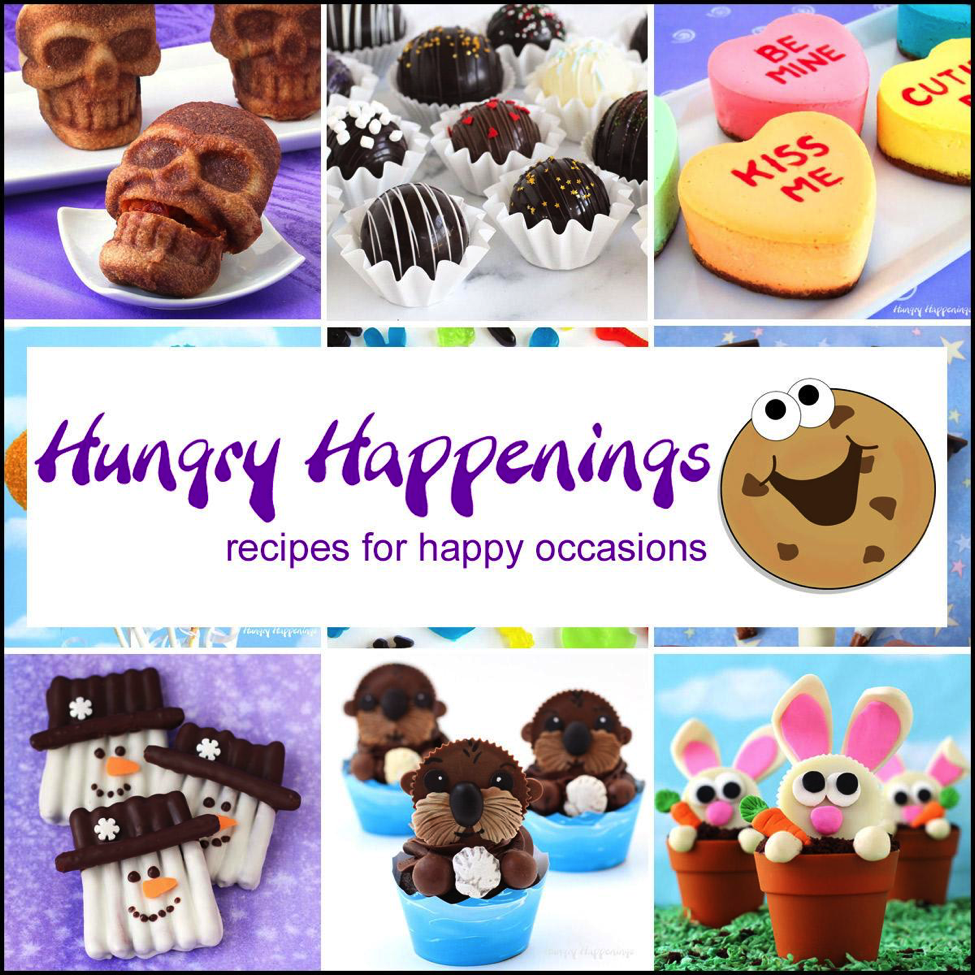
The first years of blogging were so exciting and fun. I spent my days creating unique and festively decorated desserts and appetizers for holidays and special occasions and then shared my tutorials online.
People seemed to love what I was creating. My traffic grew to an average of 250k monthly pageviews by 2013 and to an average of 400k monthly pageviews by 2015.
I worked hard to create unique recipes you wouldn’t find on any other blog.
I created things like Conversation Heart Cheesecakes (my first viral post), the original Pizza Skulls (my first viral video post), and Chocolate Snowman Pretzel Crafts (a viral post that crashed my site after receiving 200K pageviews in one afternoon.)

At the end of 2016, I moved my blog from Blogger to WordPress, and I made many mistakes during this process.
I changed my permalink structure three times and ended up with too many redirect loops. Yikes!
Most of my older posts did not have proper alt text, recipe cards (schema markup), or meta descriptions.
On top of that, none of my posts were optimized for keywords. I had absolutely no knowledge of SEO. I had spent six years filling my blog with unique recipes instead of SEO-optimized recipes.

Thankfully, I was still getting a lot of traffic from Pinterest, referrals, and social media, but things were changing in the world of blogging.
Over the next year, I had two SEO audits. Both experts told me that my blog would need a complete overhaul because my recipes were too unique, and no one was searching for them.
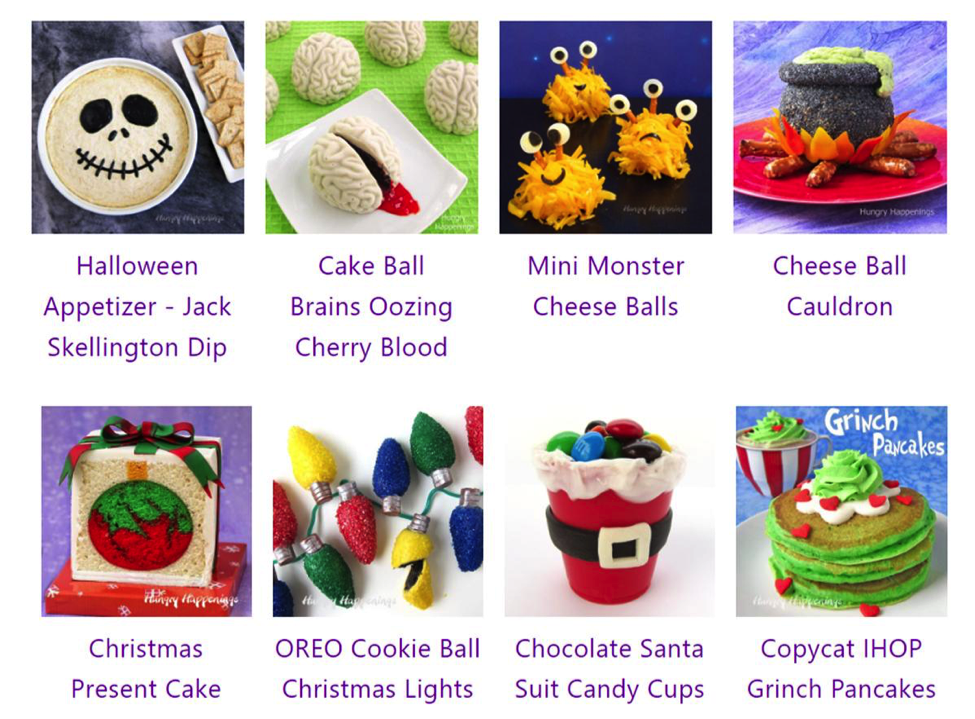
I loved the recipes I had created for Hungry Happenings and didn’t want to spend a year or two re-writing posts in the hopes that I could find keywords for posts for things like Teddy Bear Taco Tarts or French Fry Footballs.
So, I decided to try something new. I had been listening to podcasts about creating niche sites and was excited to give it a try.
Blogging is a very lonely job, so I thought it would be fun to work with another talented blogger to create these sites. I suggested the idea to Meaghan, and she was on board.
Meaghan: While I have a similar tale as Beth starting and growing with all the bumps along the way, I did so on a smaller scale.
My first daughter was born right before I started blogging, and the second was born as I was writing my second cookbook. As their primary caregiver, food blogging always had to be a part-time venture.
So my inability to devote full time combined with my focus on unique desserts and food crafts made the shift to SEO optimization tricky. Not many people google “Dr. Seuss marshmallows.”
And unfortunately, creative ideas tend to lose ownership. I created the first-ever “melting snowman cookie” in 2008. Now Target sells melting snowman cookie decorating kids. (No, I don’t get a cut.)

So my blog has never reached its full potential, and I watched peers skyrocketing in traffic while I was more stagnant.
That said, there were years when social media (which didn’t exist when I first started blogging) were very kind to me.
Back in the mid-2010s until recently, my videos on Facebook were getting hundreds of thousands of views, some in the multi-millions. I regularly reach millions monthly on Pinterest.
Because my time is so limited, I did not invest time in Instagram, TikTok, and other platforms, to my detriment, but necessity.

But blogging has also given me steady income that I earn from home, with flexible hours, while raising two children.
Pediatrician appointment? Snow day? Sick day? No problem. I’m there. And my kids know to ask “Have you photographed this yet or can I eat it?”
Decembers are my favorite month.

Their Niche Websites
We decided to work together to create a series of niche food blogs featuring easy recipes.
Our goal was to create a portfolio of small niche sites, each with about 100 easy-to-make recipes. Each site would focus on one type of recipe.

In August 2018, we created How to Make Easy Fudge.
We shared easy 2-5 ingredient fudge recipes. The site took off quickly thanks to our 600k+ social media followers. We got the site monetized with Mediavine by October.

We added 60 recipes in the first year and quickly realized a small site could generate a nice amount of extra income.
In December we can make upwards of $10K from ad revenue and affiliate sales, but the rest of the year is much slower.

In July 2019, we moved our attention to creating recipes for a new niche site, How to Make Cereal Treats.
This Rice Krispie Treat recipe website grew a bit more slowly. It took us six months to get that site onto Mediavine. That was partly due to our busy schedules.
During that time, we were also creating chocolate-making and cookie-decorating courses for The Sugar Academy, and Beth was helping her mom create an online painting class website called Louise Jackson Painting Classes.
Then, 2020 happened, and we shifted our focus to our families. That year was a blur for us both. We seriously got back to work in 2021.
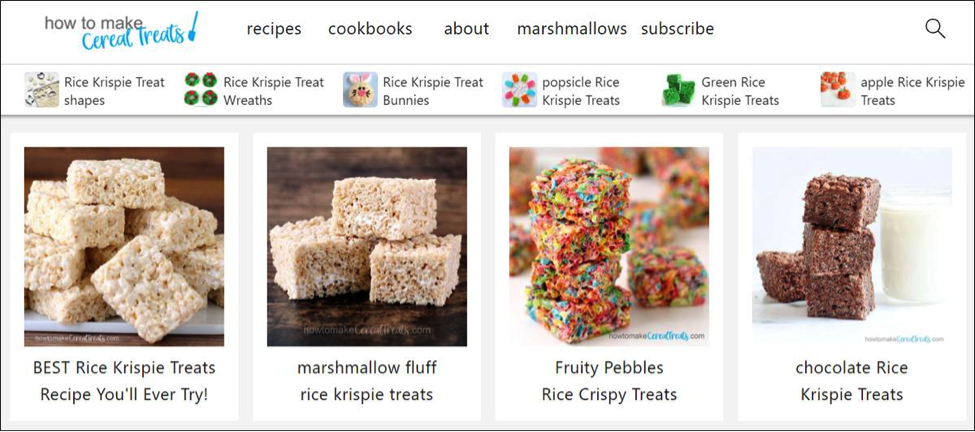
By December of 2021, we had over 100 recipes on the How To Make Cereal Treats, had published a How To Make Cereal Treats cookbook, and our traffic had grown to 160k monthly pageviews.

That month, we made over $6k in income (ad revenue, affiliate sales, and book sales). We were very happy with the progress on that site and chose to move on to our next project.
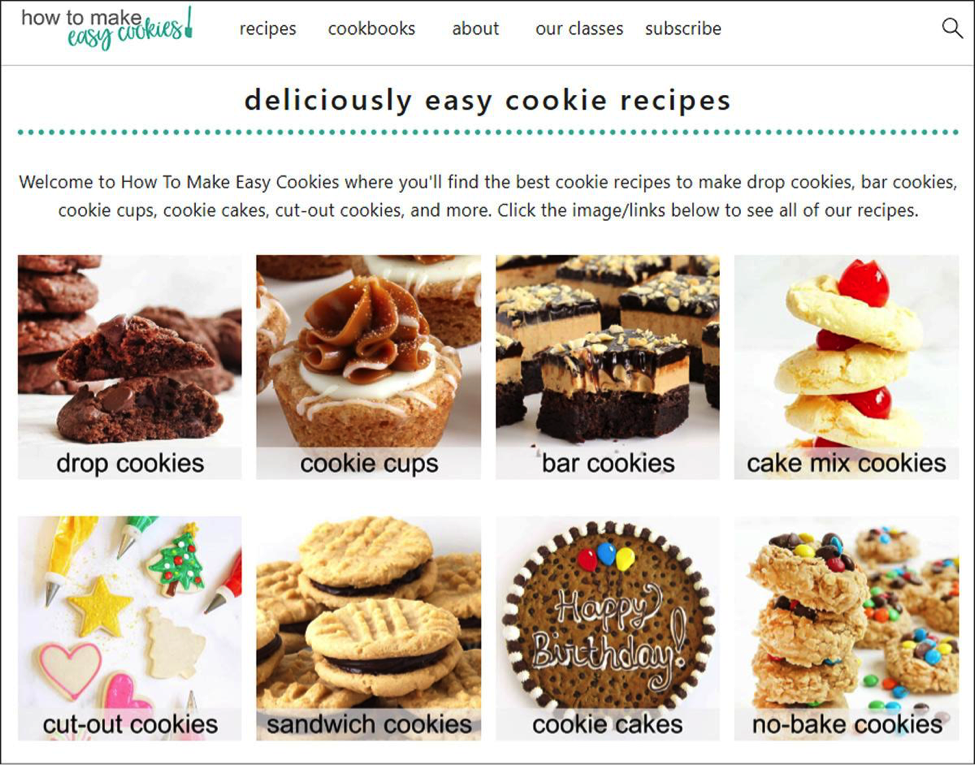
In January 2022, we started creating recipes for a new site, How to Make Easy Cookies. By October, we had about 100 recipes published on that site and got monetized on Mediavine.
We had plans to add at least 100 more cookie recipes to that blog, but then Google rocked our world.
Some of our sites got hit by the HCU update, but our Rice Krispie Treat site continued to grow! We made the strategic decision to devote most of our time to adding new content to that site and were so glad that we did.
In Q4 of 2023, our How To Make Cereal Treats site got over 470Kk pageviews, had an average RPM of $38, and made over $18k.

How Much They’re Making
Our portfolio of sites earns us a 6-figure income.
We earn money from ads, affiliate sales, recipe development jobs, sponsored posts, brand ambassadorships, book sales, royalties, and course sales.
Beth: From day one, I monetized my blog. In the early days, I monetized Hungry Halloween and then Hungry Happenings using Adsense.
Over the years, I used other ad networks, including Hyper X, Lijit/Sovern, Blog Her, The Blogging Network, and 33 Across.
I learned how to waterfall my ads to increase my RPMs. Back then, we were lucky to get a $2 RPM and a lot of our ad placements would not get filled by AdSense, so I’d fill in the gaps using another ad network.
At one time, I had three ad networks running. If AdSense didn’t fill the space, then another ad network could bid for that ad space.
Thankfully, AdThrive and Mediavine came onto the scene (I've been with both ad networks). These days, the monthly RPMs on our websites can get as high as $42.
I learned about affiliate marketing early on and added Amazon links to almost all my blog posts.
Ad revenue and affiliate revenue make up less than 50% of my income.
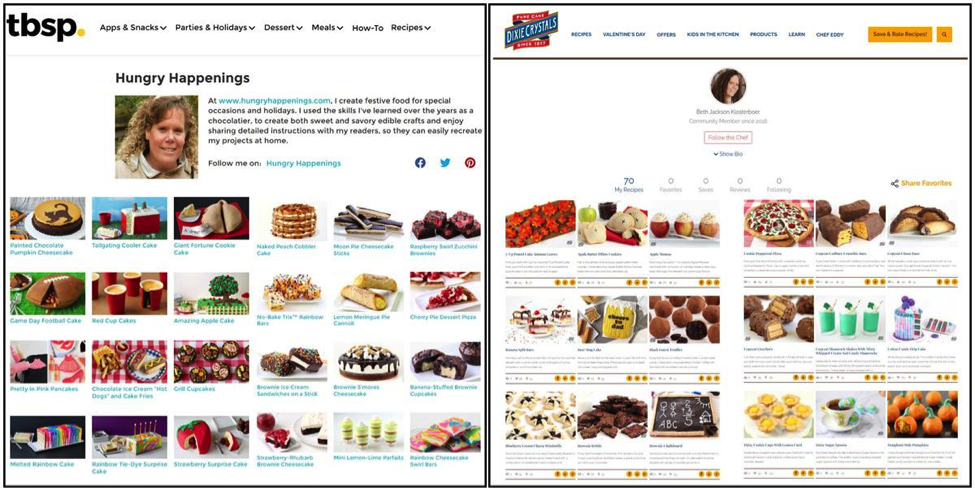
My biggest revenue streams over the years have come from recipe development for brands like General Mills (at Tablespoon.com), Bob Evans, and Dixie Crystals Sugar, a brand ambassadorship with Wilton, and sponsored posts.
Meaghan and I also sell chocolate-making and cookie-decorating courses through The Sugar Academy and earn royalties for cookbook sales.

I have self-published three cookbooks with recipes from Hungry Happenings and Meaghan and I have published two cookbooks from our How To Make sites.
Each of these books took about one week of work to put together and bring in a steady stream of passive income.

In addition, I manage a website for my mom, Louise Jackson, MDA (master decorative artist).
Together, my mom and I earn income from sales of online painting courses and e-packets, as well as coloring books, journals, sketchbooks, and notebooks featuring her artwork.
Meaghan: I have essentially had a piecemeal income for the 15 years I’ve been blogging.
I, too, have always had ads, starting with AdSense and moving on to platforms that no longer exist, but the income was a pittance.
During a small blogging retreat to Jamaica in the fall of 2015 (did I mention blogging has perks? Like a free trip to Jamaica?), I met Eric Hochberger and Amber Bracegirdle.
They were starting an ad network called “Mediavine,” and had only a few publishers. Instantly impressed, I signed with them the day I got back from Jamaica. Now they have thousands of publishers. But it has given me steady ad income.
That said, it’s unwise to rely on one source of income in this business. Over the years, I earned steady income creating food crafts with sponsored products, including General Mills and Kix Cereal, Welch’s, Nielsen-Massey, Wilton, and many more.
Each of these posts would earn between $500 and $1500 depending on how involved the recipe was. I also created monthly posts for Tablespoon.com.
I no longer create sponsored posts unless actively asked, due to time restrictions, but it was a vital source of income.


I also spent a few years as the Edible Crafts editor at CraftGossip.com, for which I earned about $800 a month, for just a few hours of work a week.
As Beth mentioned, we have passive income from our self-published cookbooks and courses at The Sugar Academy. And I do earn a little bit from the Amazon Affiliate program.
I also earn nominal royalties from my second cookbook.
Interestingly, I earned a $40,000 advance for my first cookbook, Cookie Sensations, and only $25,000 for my second, Sugarlicious.
By the time I wrote my second, publishers were catching on to the idea that for very little money, they could hire food bloggers to pump out cookbooks, so advances dropped dramatically.
I knew food bloggers who were taking on contracts for only a few hundred dollars, which I couldn’t fathom for myself, given the massive investment of time in writing a cookbook. So I moved on from trying to traditionally publish any more cookbooks.
On a side note, I do have a picture book manuscript currently on submission (which means my agent is looking for a publisher), so my initial dream may end up coming true after all!
Having a portfolio of sites and many revenue streams helps to balance income when something dramatic changes, like a pandemic or crazy algorithm updates. We are both so grateful that we decided to create these niche websites.
Their Unique Marketing Strategies
We primarily promote our recipes, courses, and book sales via social media and email newsletters.
Beth: The most unique marketing strategy for my business has been doing cooking segments on a local morning show and teaching cooking classes at our local cookware store.
Meaghan: I, too, have done quite a few morning shows, which is always stressful, but ultimately fun.
I’ve been blogging long enough to say “I remember when,” before social media, marketing strategy was simply being seen by other bloggers and added to the list of blogs they like in their sidebar!
It was a very different world.
Their Thoughts on SEO
SEO has become vitally important to our business.
Over the years, we have used Semrush, KeySearch, Google Search Console, Google Trends, and Google Search to do keyword research.
Beth:
I miss the good old days of blogging when I could create something unique and fun, and the post would go nuts and bring in a ton of traffic. I hate having to be a slave to SEO. It stifles my creativity.
Meaghan: I fully agree. I would love it if a million people would Google “How do I make rainbow candy pops” or “How do I turn celery into a caterpillar,” because I’d win at those.
The uniqueness of creative food used to be enough, because a Facebook video would bring in 100s of thousands, if not millions, of views.
Once Facebook realized they could ask us to pay money to show our videos to our own followers, that gravy train ended.
And in the food blog world, it means you adapt to survive. This is where our niche sites entered the game.
Keyword Research
When creating our niche sites, we searched for the top 100 keywords within that category, and then we created a post for each recipe starting with the highest search volume.
We got lucky that this strategy worked for us.
How To Make Cereal Treats has hundreds of 1st position keyword rankings, and when we post something new, it only takes a short time to rank.
Link Building
When we created the fudge site, we asked for link exchanges with a few bloggers to get us started, but we haven't done that since.
We also share our recipes with other bloggers to be featured in their roundups. There are several Facebook groups for that.
We thankfully acquire backlinks organically because our recipes are quite shareable.
Beth: Link building was a bigger focus for me with Hungry Happenings. Early on, I shared my recipe posts to sites like Foodgawker, Craftgawker, Craft Gossip, and on lots of linky parties (popular back in the early days of blogging).
Fortunately, my creative posts were very visually appealing and lots of bloggers and online magazines including Food Network, Huffington Post, BuzzFeed, Woman’s Day, Oprah Magazine, and many others linked to my site.
The site has over 200k backlinks.

Meaghan: While recognizing the importance of backlinks, I don’t have a strategy for building them. All of my backlinks have happened organically over time.
I receive at least a dozen emails a day requesting guest posts or link swapping, and I ignore them all.
To me, it’s an “ick” factor. If they don’t happen legitimately, they don’t happen.
I do participate in a couple of Facebook groups where bloggers request recipes for roundups, and I will respond, building backlinks that way.
But I have no interest in paying for backlinks or responding to emails claiming they have the secret to “trick” Google.

Their Content Creation Process
Beth: In the early days of blogging on Hungry Happenings, I created 4 to 7 recipes a week, posting them on my site or on a brand’s website.
Hungry Happenings currently has over 1000 posts and at one time had over 1200 (I’ve deleted a lot of old content).
Now that I'm older, I've slowed down. I'm happy if I create 1-2 new recipes a week. I've also been spending a lot more time updating old posts.
Meaghan: I used to create at least one to two recipes per week. I have over 1200 recipes on The Decorated Cookie.
As I’m shifting my priorities back to children’s literature, I rely on my site now for passive income, creating nothing new.
I do, however, continue to share existing posts to social media (despite the infuriating lack of reach), especially Pinterest, my most rewarding social media target, each week.
Together: When creating our niche sites, we’d create 10 posts before going live with the site. We wanted the homepage to look full before launching the website.
Each of these sites is quite small. As of now, our fudge site has 94 recipes and roundups, the Rice Krispie Site has 181 recipes and roundups, and the cookie site has 110 recipe posts.
Their Email Lists
We have individual email lists for each of our websites and have sign-up pages on each of the sites.
We currently use Flodesk to send out our newsletters.
How Much Time They Spend on Their Sites
Beth: I spend too much time! I’m a workaholic, for sure. I work anywhere between 40-80 hours per week.
Fortunately, I take lots of time off to travel the world, so it balances out. Since I began blogging, my husband and I have traveled to 13 countries and many states in the USA.
I just returned from a month-long, work-free, beach vacation in Florida.
Meaghan: For the first ten years or so, I would vary my hours between about 25 to 60. That’s a wide range because every week with kids is different.
Holidays, summers, doctor appointments… Flexibility is the best part of food blogging.
Now, I devote even less time. So what income I do earn, while decreasing from my inactivity, is still steady enough that I appreciate it.
Their Favorite Resources
Beth: I have learned so much from Food Blogger Pro, Top Hat Rank SEO For Bloggers, Income School, and the Niche Pursuits Podcasts. I listen while I’m in the kitchen working.
I also have learned a lot by attending blogging conferences. Attending has also opened up so many opportunities to work with brands.
Meaghan: Attending conferences has been one of my favorite aspects of blogging. Traveling all over the country to talk food and meeting hundreds of bloggers? Wonderful.

Facebook groups for food bloggers are another great resource.
You have access to so many of your peers willing to share advice and answer questions. Mediavine has a publisher Facebook group that is quite active, and I learn a lot from the Food Bloggers Central group.
Their Go-To Tools
Beth: #1 WordPress - Where would we be without WordPress??? Being able to use this free tool has allowed me to earn more money than I ever imagined. I’m truly grateful.
#2 Libre Office (free and open source software similar to Microsoft Office) - I’m old school and ridiculously frugal, so I track everything in spreadsheets.
#3 Semrush - It’s great if you can afford it for keyword research and site audits. I’ve purchased the tool for a few months and have done tons of research (downloaded to spreadsheets), then stopped my subscription until I need it again.
I just started using KeySearch because they had a great sale price. I like it so far.
Meaghan: I second Beth on WordPress and Semrush for keyword research tools.
Adobe Creative Cloud is vital to me. I edit photos and videos with Photoshop and Premiere Pro.
As I shift my career to writing and illustrating picture books, Procreate on the iPad combined with Photoshop is a lifesaver.
Also, my web host. I use a small company as my web host (Grits Design) and the owner does a lot of the technical side for me. Beth is a natural at the technical infrastructure of blogging.
I am definitely not, so it’s worth it to pay someone who is.
Their Biggest Challenge
Beth: The constant changes to the blogging and social media world have been the biggest challenge over the years. As soon as I figure something out, it gets changed.
Also, not having control over the fate of my businesses is very daunting. The past two years of Google algorithm updates have caused more stress than anything I’ve encountered in my 13 years of blogging.
Not knowing what to fix on a blog to please the Google gods is a nightmare!
Meaghan: I wholeheartedly agree with Beth. Also, for me, feeling like I’m always one step behind or just a bit too slow to jump on the latest bandwagon.
But we’re both still here well over a decade, when so many food blogs don’t survive.

Their Most Important Accomplishments
Beth: My biggest accomplishment is making a good living while bringing joy to customers and readers by doing something I love.
Watching a smile form on the face of a child who is eating one of my treats or getting wonderfully kind comments from happy readers makes all the hard work worth it.
Meaghan: One would think that food blogging is isolating and not a path to save the world. But every now and then, I have a student contact me with questions about cookie decorating and I’m able to help them and teach them.
Or someone contacts me who has my book to tell me I helped them find their passion. Interacting with people who have learned from what I create is rewarding.
What They Wish They Knew When They Started
Beth: If I could go back to 2010 and talk to myself, I would suggest that I start blogging on WordPress (not on Blogger), learn more about white balance (to make my photos look better), never (ever, ever, ever) change a permalink, and learn about SEO.
Meaghan: I echo Beth’s advice! I did start on WordPress, thankfully, but I would tell myself to learn SEO from day one. And get involved in social media as soon as a new platform arises.
Their Biggest Mistake
Beth:
My biggest mistake was envying the success of others and not enjoying my own success enough.
I’ve gotten to live a pretty amazing life thanks to the success of my businesses, and I need to remind myself of that often.
Meaghan: Once again, I agree with Beth.
By focusing on the ways I did not grow, I didn’t recognize the ways I did, all while juggling parenting, which has always been my first priority.
Their Advice for Other Entrepreneurs
Beth: My best advice for a new entrepreneur is to create a business that you are passionate about. The daily grind of earning money to support yourself and/or a family can be very stressful.
If you don’t do something you love, your days will be filled with more stress than joy.
Meaghan: You have to enjoy the process overall and have to love your own goals, because there will be challenges along the way–and a good bit of tedium comes with any business-building. So the fun part always has to be bigger.
Their Future Plans
Beth: As much as I love food blogging, I am ready for a new adventure.
In 2024, my husband and I plan to combine our love for travel with blogging and to create a travel blog. We are excited to see where this journey takes us.
Meaghan: I’ve recently returned to my first love, writing and illustrating for children (you can visit my portfolio at Meaghan Mountford.
I’ll always keep the blogs going, as I am loyal to the years of hard work, and we will need the income, but I’m spending more time on this next (literal) chapter.
Want to learn step-by-step how I built my Niche Site Empire up to a full-time income?
Yes! I Love to Learn
Learn How I Built My Niche Site Empire to a Full-time Income
- How to Pick the Right Keywords at the START, and avoid the losers
- How to Scale and Outsource 90% of the Work, Allowing Your Empire to GROW Without You
- How to Build a Site That Gets REAL TRAFFIC FROM GOOGLE (every. single. day.)
- Subscribe to the Niche Pursuits Newsletter delivered with value 3X per week
My top recommendations
















